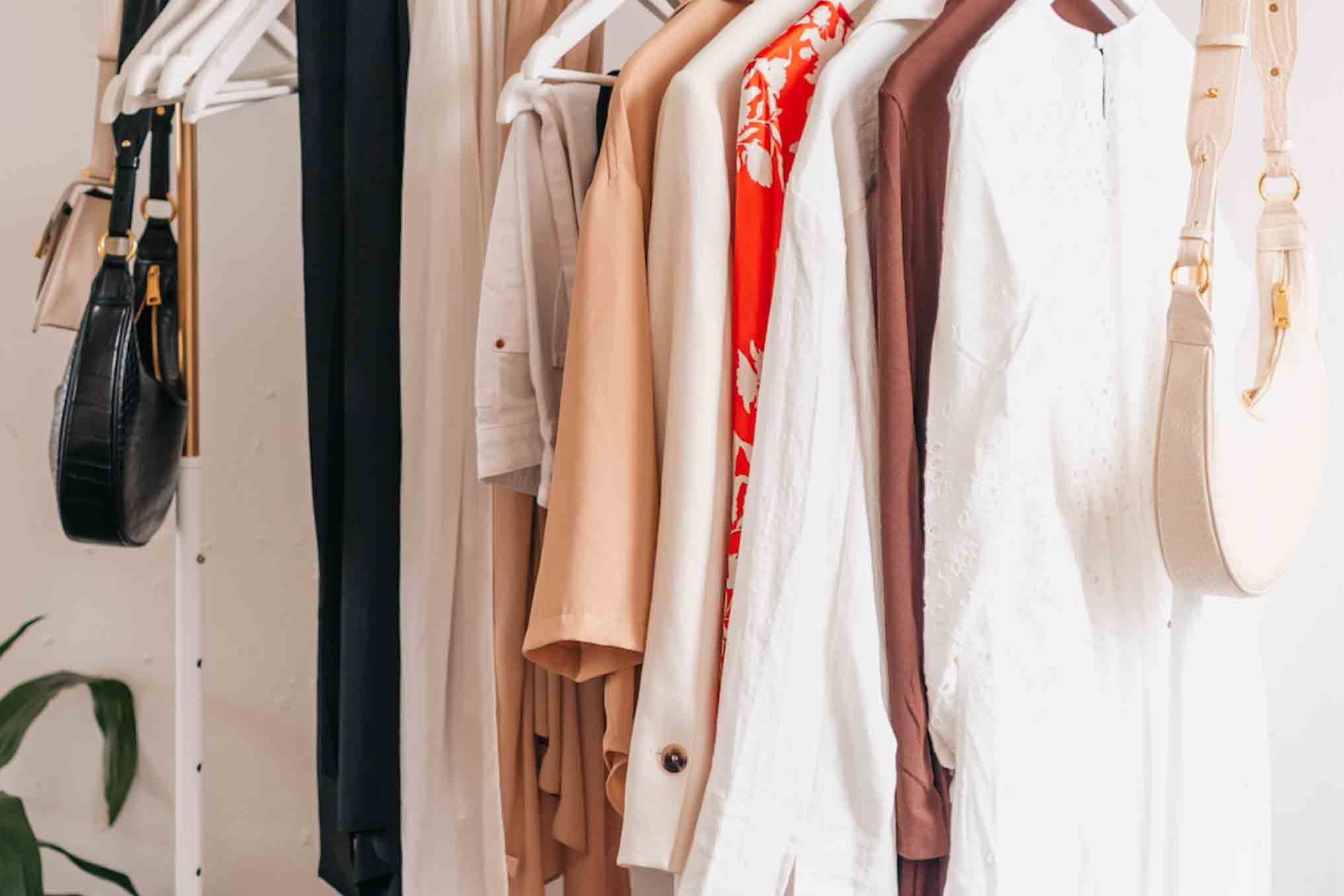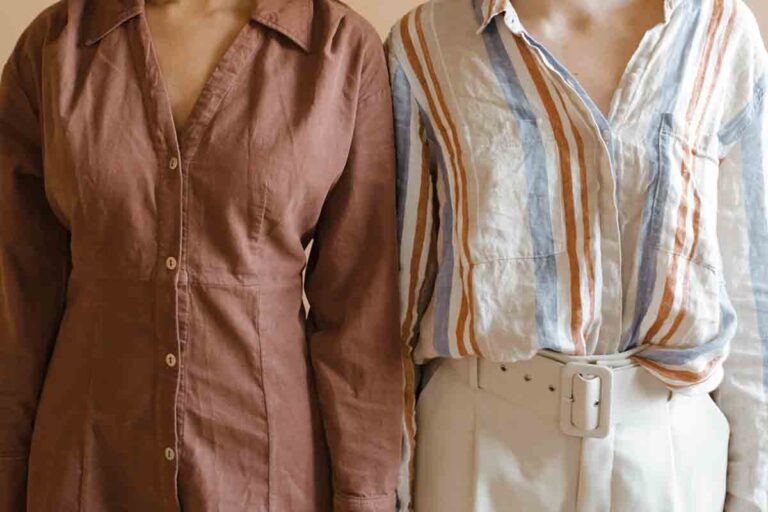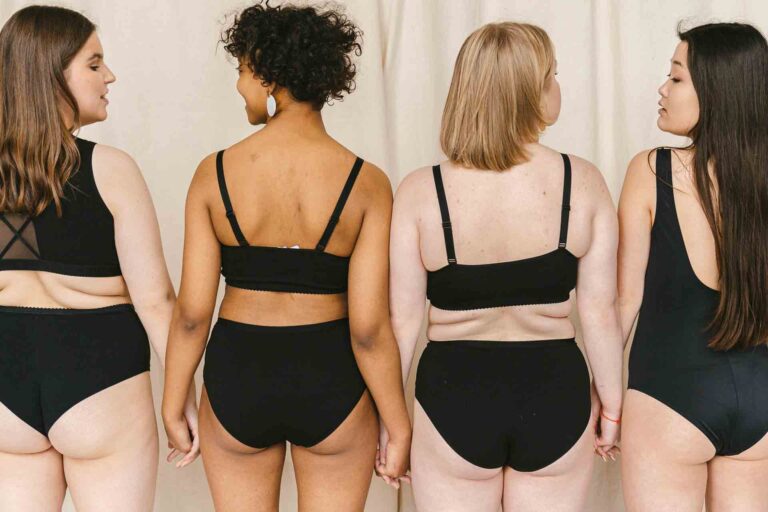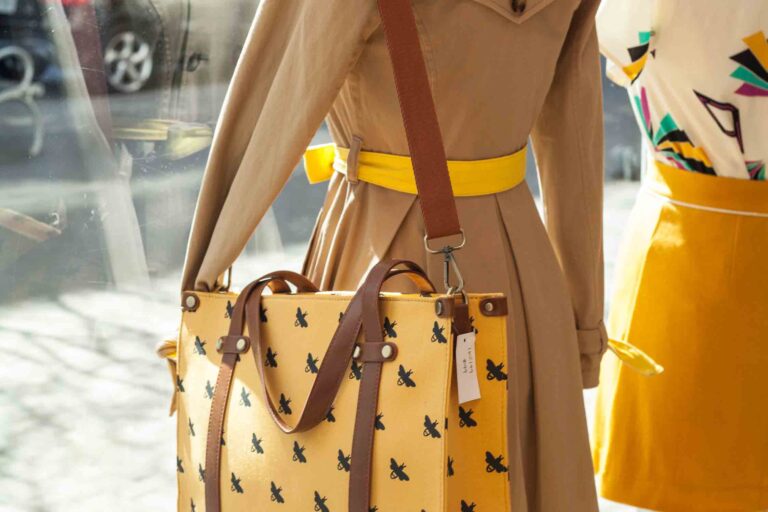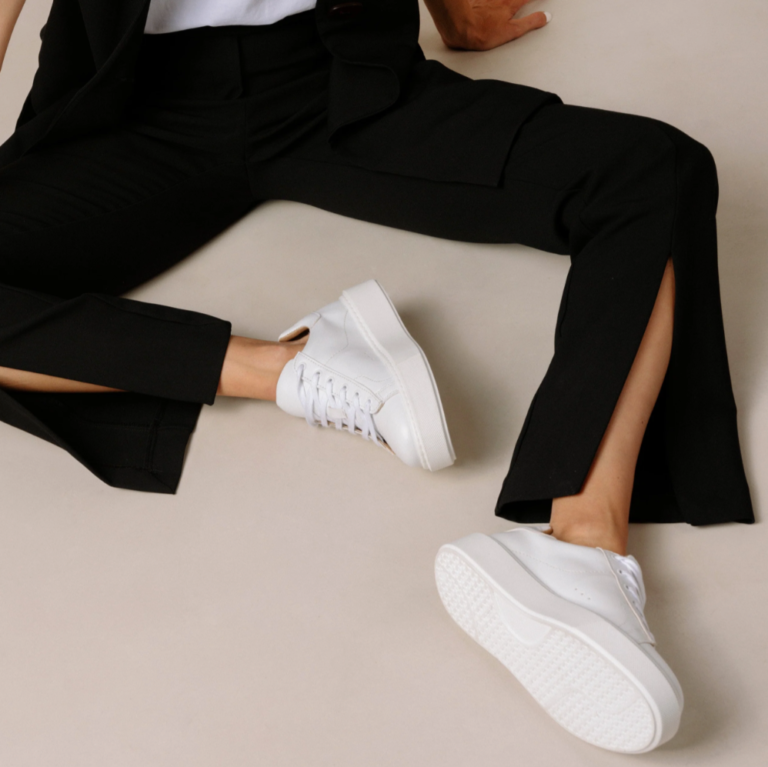There are skeletons in your closet, and you might not even know it.
Maybe it’s the cotton t-shirt, that took 2700 liters of water to make.
Or perhaps that acrylic sweater, which contributed to the 2 million tonnes of microfibers that are released in the ocean yearly.
And while none of us want to support an industry that contributes 2-8% of the yearly global carbon emissions, without conscious actions, it is easy to find yourself participating in the fast fashion industry, whether you like it or not.
Luckily, there are better options. Learning to create a sustainable wardrobe isn’t just a trend. It’s a conscious choice that benefits our own health and the health of the planet.
Curious to align your wardrobe with your values? Keep reading to explore why sustainable style matters, practical advice to get started, and learn about creators and resources already working towards a better fashion industry.
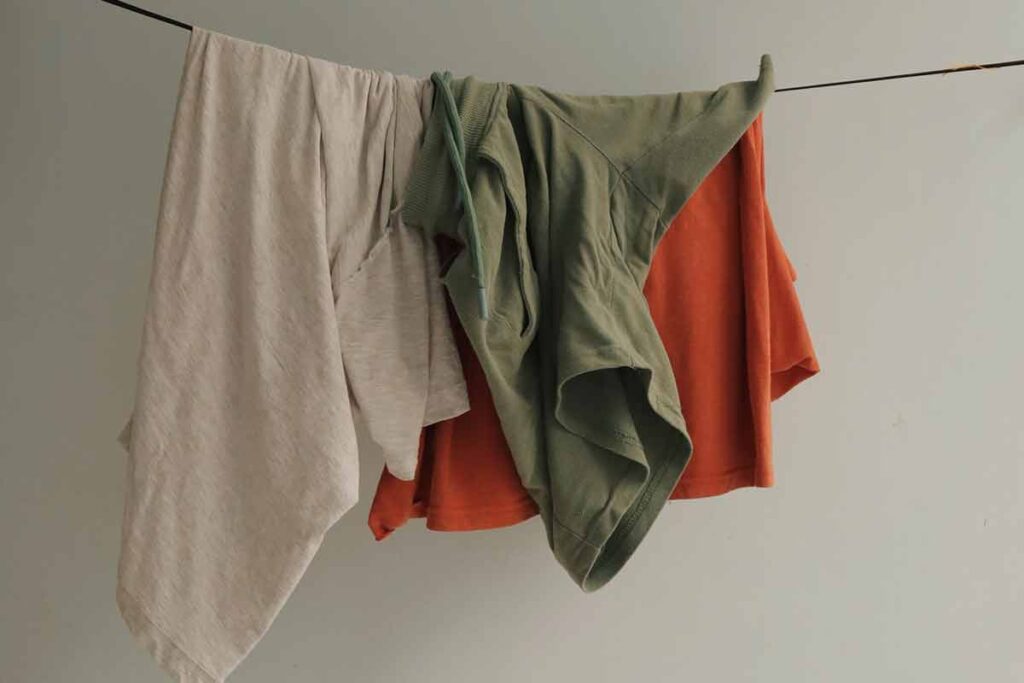
What is a Sustainable Wardrobe?
A sustainable wardrobe is a consciously built closet that follows principles of sustainable fashion. These include:
- Prioritizing healthy materials: This includes means using fabrics like organic cotton and other natural fibers, recycled materials, and ones that don’t use harsh dyes and chemicals or rely as much on fossil fuels. While both natural and synthetic fabrics have advantages and disadvantages, we can learn to prioritize the best of both.
- Supporting fair treatment of workers: Only 2% of garment workers earn a living wage. Many work in unsafe and unhealthy environments.
- Lowering consumption: Instead of buying lots of cheap clothes that don’t last long, sustainable fashion encourages buying fewer, higher-quality items that will last longer.

More than Minimalism
When I first learned about sustainable style and sustainable fashion, I found it to be limiting, expensive, and boring.
But now, I find it freeing. It allows us to embrace a style that we actually like, versus always trying to keep up with the new styles. It’s more than just swapping fast fashion for higher-quality items; it’s about redefining consumption and living in line with your values.
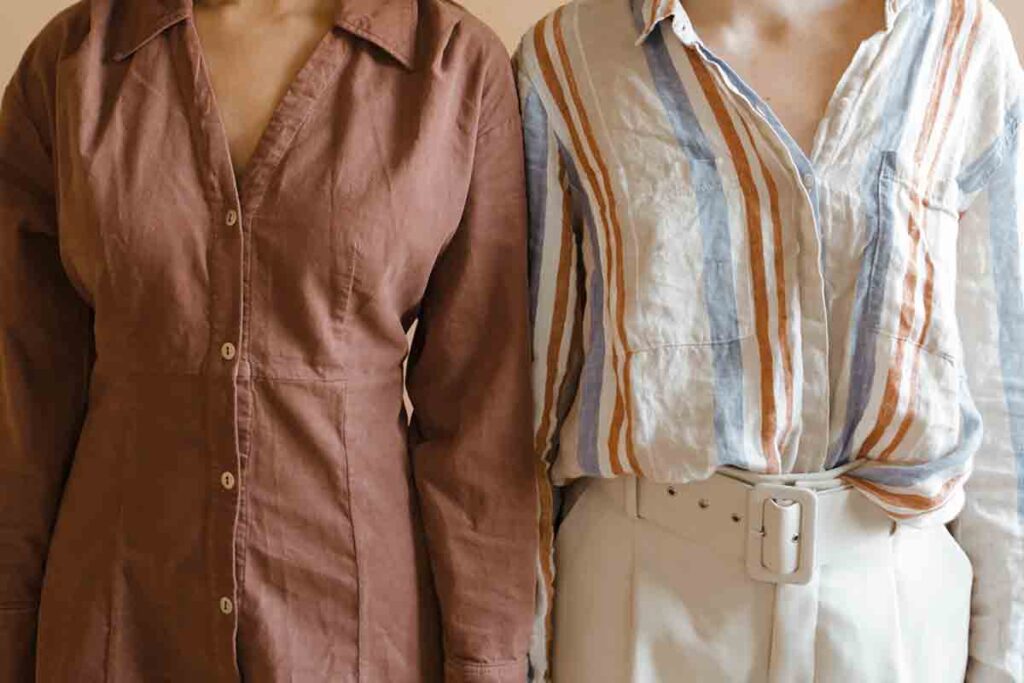
How Does Sustainable Fashion Impact Your Life?
A sustainable wardrobe isn’t just good for the environment, it also benefits you personally. For example, it will:
- Save time and money: Learning to curate sustainable style breaks you out of the endless game of catch-up that is fast-fashion. It helps you regulate impulse buying and purchases you don’t end up wearing, or wear for only a short amount of time.
- Improve your personal health: Your clothes are your second skin. Clothing can have impacts on our health, including from the fabrics and dyes used. We can prioritize our health through sustainable style by dressing in materials that are gentle on the planet and our bodies.
- Align with your values: Sustainable style goes hand in hand with authentic living, aligning appearance with values. Dressing true to yourself will lead to confidence, which stems from self-expression, not conformity.

6 Steps to Craft a Sustainable Wardrobe
- Create The Blueprint
- Evaluate To Elevate
- Learn The Language
- Build Your Basics
- Explore Without Risk
- Care For What You’ve Crafted
You’ll notice this list goes deeper than just suggesting second-hand shopping or sustainable companies.
While those are also important elements, changing your mindset around fashion and starting to view your wardrobe as something you’re consciously crafting is the best way to navigate the world of fashion responsibly.
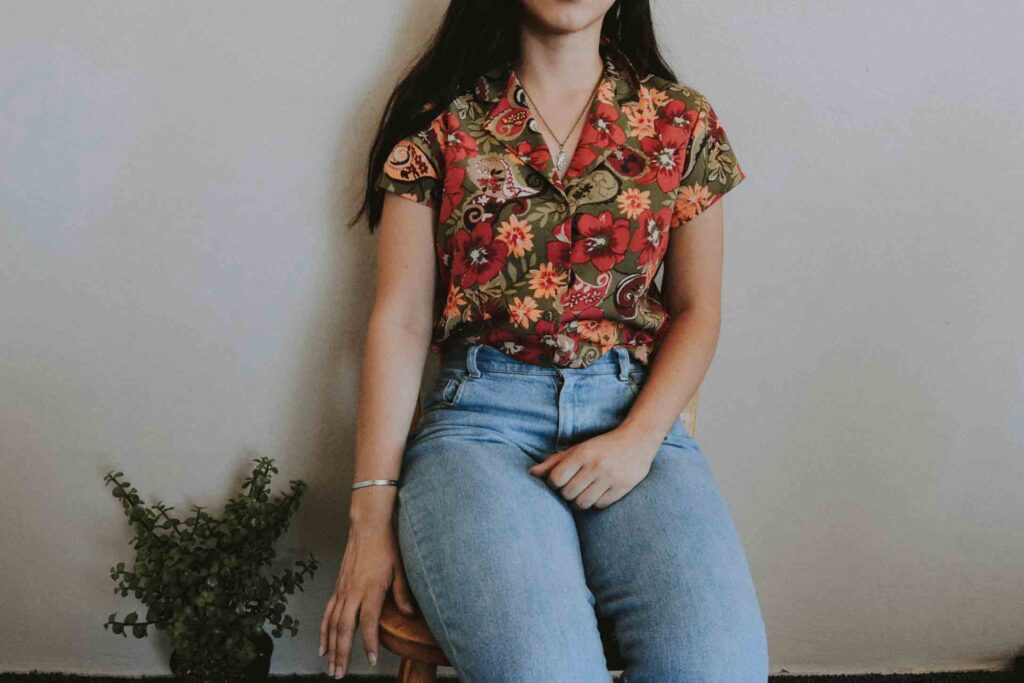
1. Create The Blueprint
Understanding Personal Style
Understanding your personal style is crucial to building a sustainable wardrobe. It helps you make mindful choices, avoid impulse buys, and ensures that the pieces you select truly resonate with your identity and principles.
Though your style will develop over time, understanding what styles best fit your body and what colors suit you gives you a great foundation to build upon.
There are many personal style resources you can check out – Ellie-Jean is one example of a style creator who talks about color theory and the Kibbe Body Types. Understanding what shapes and colors may fit you best is a great way to start defining your personal style and be able to avoid impulse purchases that don’t suit you.
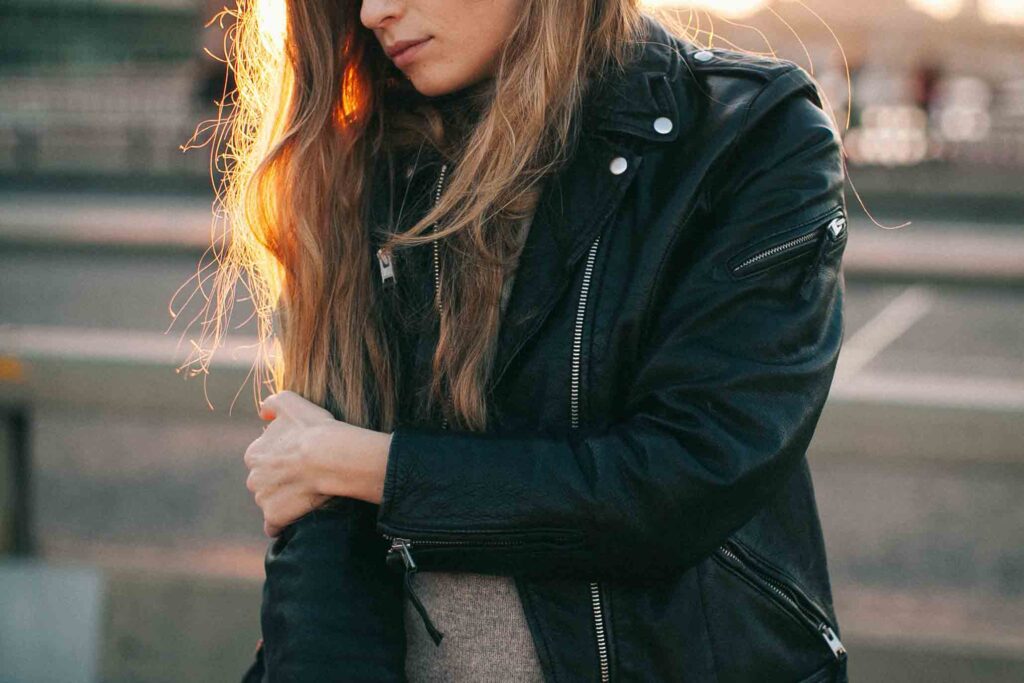
Determining Your Wardrobe Needs
The second aspect of building your sustainable wardrobe foundation is writing down what situations you need to dress for.
Do you work from home, or go into an office where professional wear is required? How often do you dress up, and to what extent?
By writing down what situations you commonly find yourself in and the clothing requirements for each, you can get a better picture of what should really comprise your wardrobe.
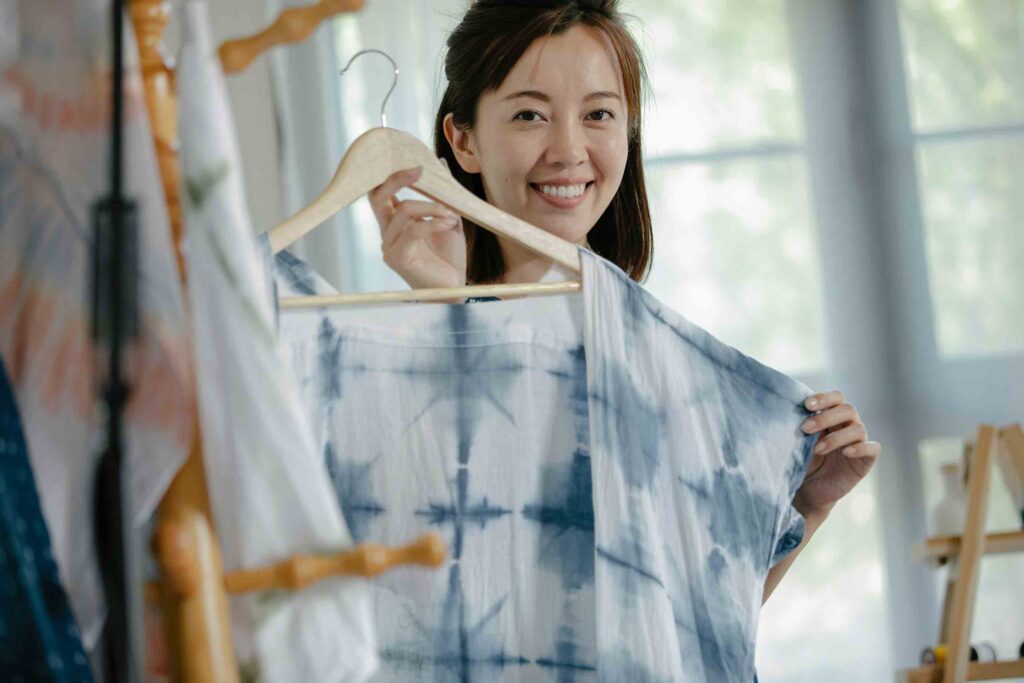
Defining Your Values
Another aspect of building your foundation is defining your values. If you’re reading this, you likely already know of the detrimental impacts of fast fashion. Learning about the importance of ethical and sustainable practices will help you identify and stick to your commitment of building sustainable style.
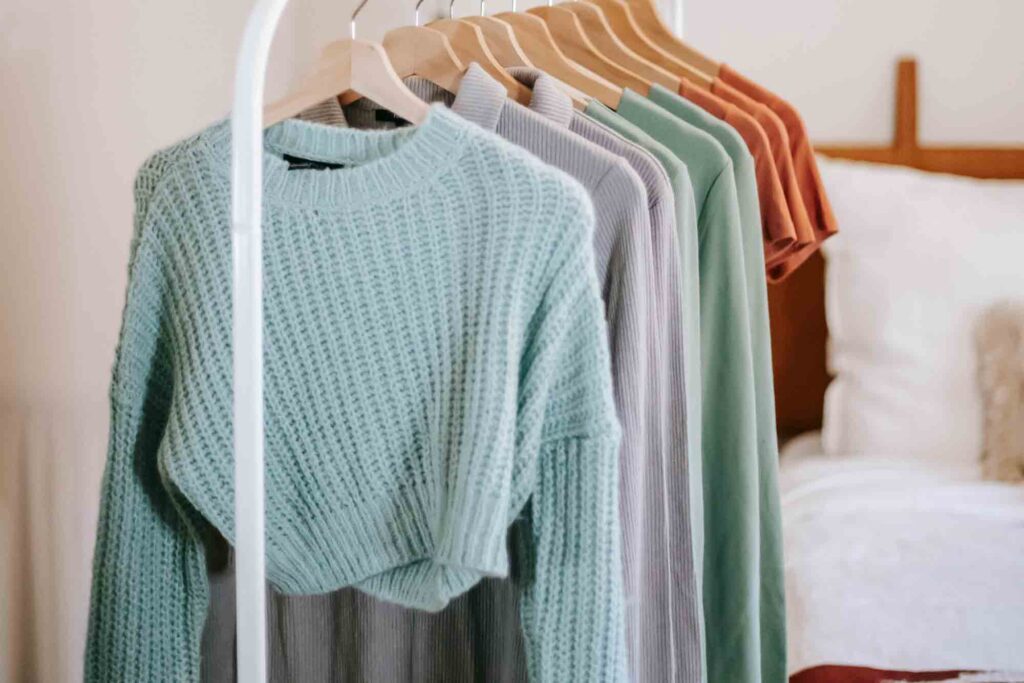
2. Evaluate To Elevate
Assess What You Have
Now that you have a loose idea of what it is you’re trying to build, it’s time to go through what you’re starting with. While you can donate any pieces you don’t wear, I actually advise against the giant wardrobe purge of unwanted clothes.
Though this can feel relieving, it often creates a need to then go out and replace your now empty closest. If there are pieces you decide to donate, take a minute to think through what you don’t like about that piece so you can avoid a similar purchase in the future.

Instead, try looking at your wardrobe with the goal of changing how you view it. Put yourself in the mindset of your future self with their style defined, and assess your wardrobe as if you were given these clothes and must create an outfit with what you were given.
Put together 2-3 outfits that you enjoy and fit your style. Make note of what gaps you feel exist in your wardrobe that you identified during step 1.
Enhance instead of Replacing
If you have any pieces you like but don’t fit properly, consider having them tailored instead of purchasing new. Depending on the piece, this often costs the same or less as purchasing a new garment, ensures what you have actually fits, and reduces consumption for a more sustainable wardrobe.

3. Learn The Language
Learn Label Literacy
I pride myself on being a great thrifter, as I can easily sift through racks of clothing to find hidden gems.
This is largely because I can recognize quality fabrics, which you can do, too, by checking the labels, whether the garment be new or used. Opt for natural fabrics, such as cotton, or recycled fabrics, like recycled nylon, over other synthetic fabrics, like virgin polyester.
These fabrics will likely last longer and have a better impact on the planet, making them great choices for your sustainable wardrobe.

Check Brand’s Sustainability Ratings
Another way to find ethical brands who adhere to sustainable wardrobe principals when you’re looking to purchase new is to check the brand’s sustainability rating on Good On You.
Good on You “reads between the seams,” as they put it, to tell you about a brand’s commitment to the planet, people, and animals.
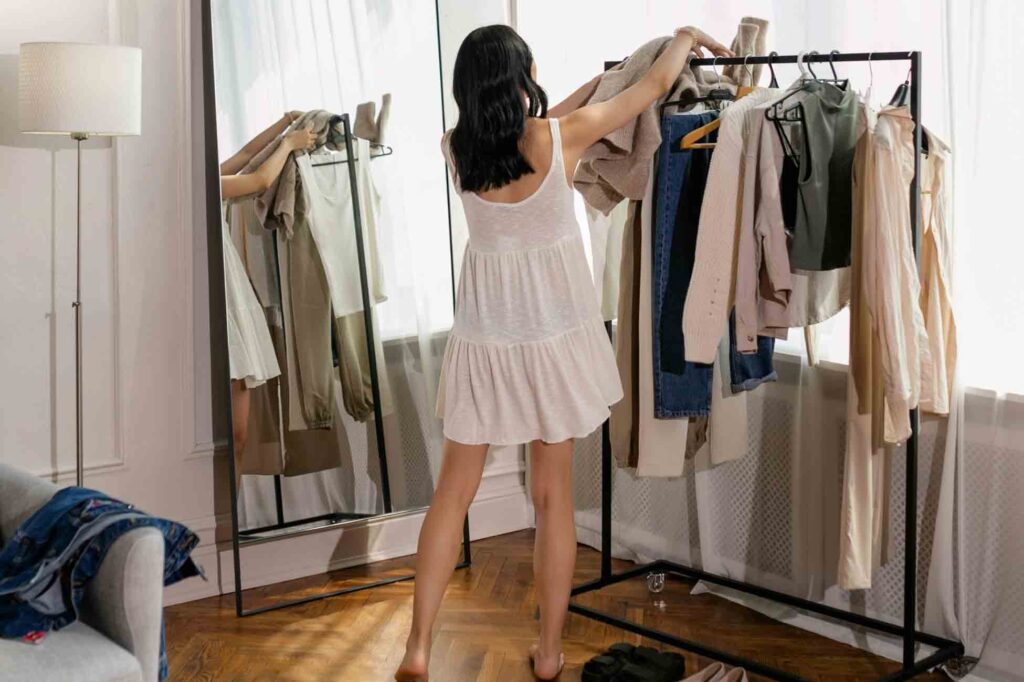
4. Build Your Basics
Now that you know what to look for, what you have, and how to identify good options, start adding to your sustainable wardrobe by building a foundation with essential, versatile pieces.
Think of layering basics such as timeless shirts, well-fitting jeans, and quality trousers. As you will likely wear these often, take this as an opportunity to really prioritize quality materials that will hold up over time.
Create Set Looks
Craft five to seven easy looks that reflect your personal style—looks you can easily return to, refresh, and embellish for variation. This idea of creating a “style uniform” with a few easy looks you can go back to is a great approach, as aiming for seven outfits can feel like a less overwhelming goal than building an entire wardrobe.
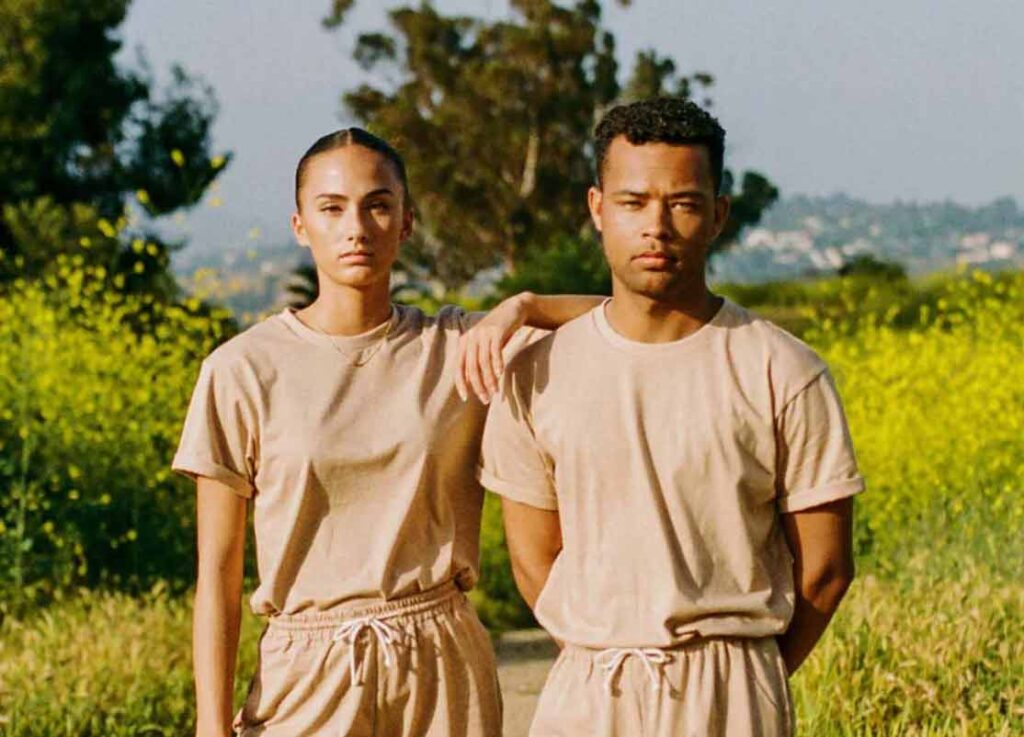
Treasure Hunt
To actually find these pieces, make a list of the basics you’d like to eventually add. Write down where you’ll wear these pieces and think through how they’ll fit in with what you already have.
This will give you a better idea of the fit, color and style you really want. Then, rather than immediately making purchases, retain your list for reference.
Whether browsing a thrift store or shopping with friends, approach it as a “treasure hunt” for that ideal item, embracing the joy of discovering each piece for your sustainable wardrobe instead of the urgency to obtain it right away.
You can also check out my guide to Discover and Support Local Artisans.

5. Explore Without Risk
Style Swap
Crafting your sustainable wardrobe can be a challenge, as there is trial and error involved in figuring out what truly suits you. This can lead to wasted time and money.
This is a great opportunity to borrow and rent clothing; I’ve hosted a few “clothing swap” parties with friends, where everyone brings a few pieces they no longer wear. It’s a great opportunity to spend time with friends and spread the sustainable style conversation with those around you, while enhancing your own wardrobe.

Borrow instead of Buying
Clothing rental platforms continue to grow. This is a great way to try out a new style, color or print and test its fit in your sustainable wardrobe without committing to purchasing it. There have been pieces I’ve rented from Nuuly that, on first thought I loved, but after a few wears realized they didn’t fit me how I wanted.
The great part about these platforms is you can also purchase pieces you like after renting for a discount. My approach is to rent, return, and if I find myself wishing I still had that garment, rent it again with the intention to buy. Slowing down my consumption in this way has helped me separate what I truly like from what simply excites me in the moment.
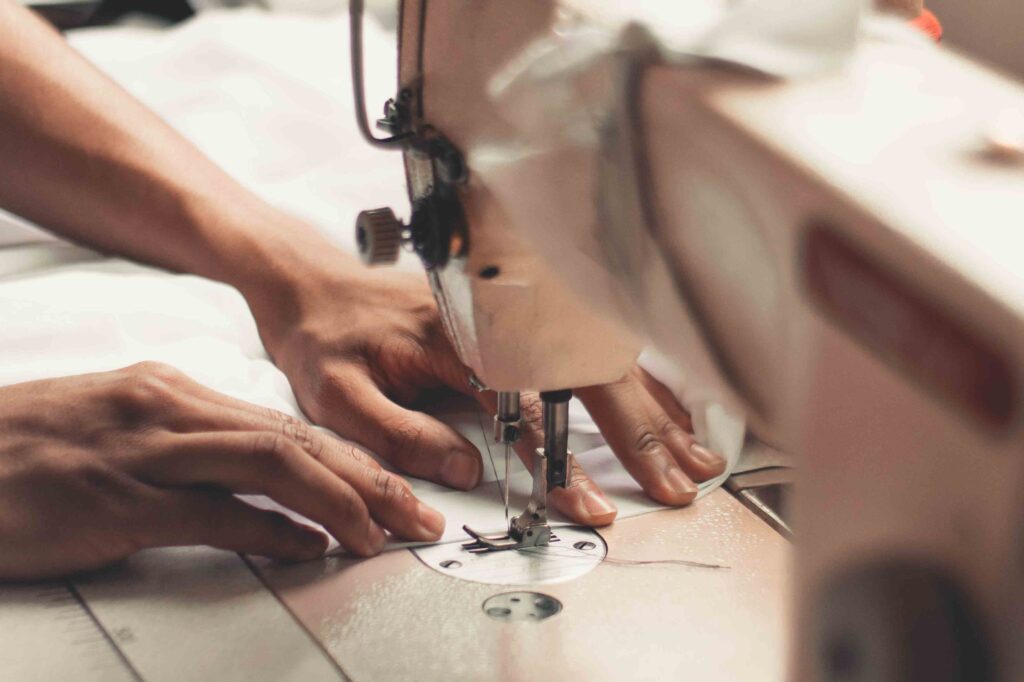
6. Care For What You’ve Crafted
Wash with Care
Most people actually over wash their clothing. This not only wastes water, but will also quickly wear down your clothing. While your undergarments and t-shirts that are closer to your body may need more regular washing, jeans, for example, only need to be washed after 4-5 regular wears.
Trousers or slacks can typically be worn 2-4 times per wash, and sweaters can often go 5 wears or more before needing a wash. While this depends on the person, challenge yourself to think of why you’re washing before throwing your garment in the hamper.
Simple Fixes
Even if you’ve never sewn before, buying a simple mending kit and learning a few simple fixes, like sewing on buttons and mending a small tear, can go a long way in preserving the life of your clothing.
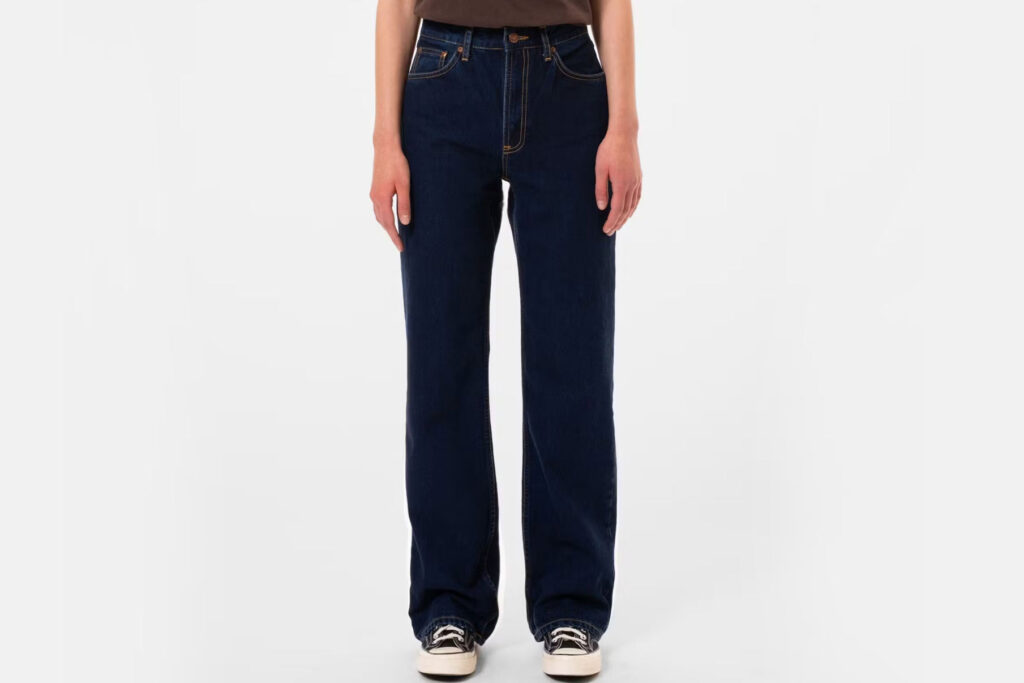
My Favorite Sustainable Clothing Brands
There are many sustainable fashion brands that make quality clothes and are working towards creating a more sustainable future.
- Patagonia: Outdoor gear
- Nudie Jeans: Organic denim
- MATE The Label: Sustainable basics and underwear
- Rothy’s: Shoes made from recycled synthetics
You can also check out my thoughts on the best organic clothing brands in 2024 or the best sustainable underwear brands in 2024 for more sustainable brands.
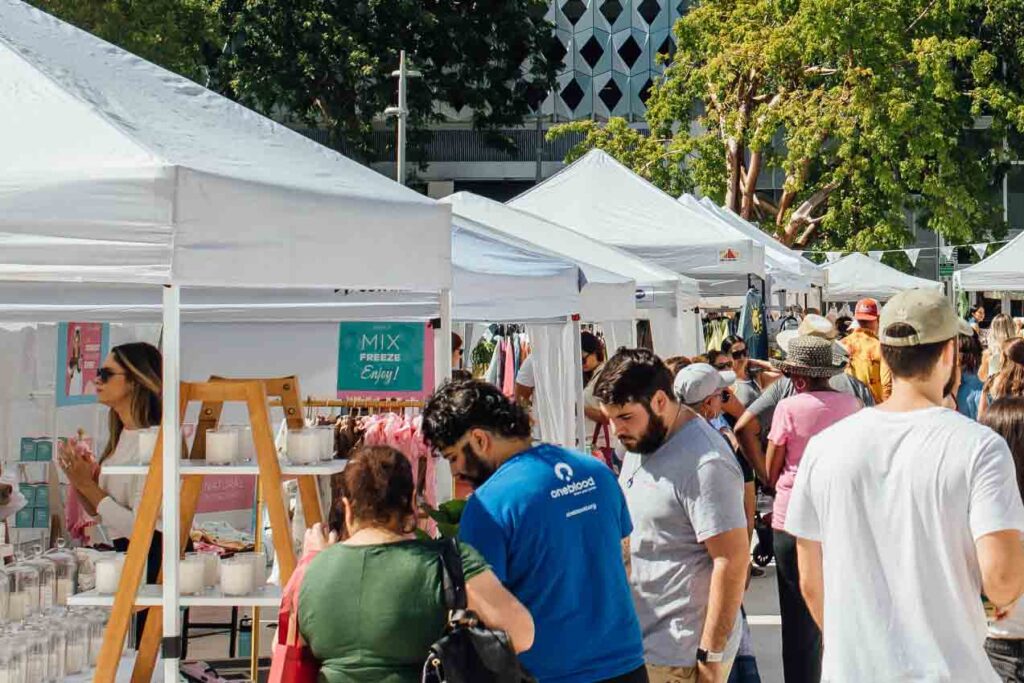
Key Considerations For Successfully Building a Sustainable Wardrobe
Whether creating a more sustainable wardrobe is something you’ve been working on or just starting to learn about, the idea of changing your clothing habits can feel overwhelming. My biggest advice is to just take it slowly! The best part about hopping off the fast fashion train is that there’s no longer a rush, one of the reasons that we call it the slow fashion movement.
Your authentic style isn’t something that will change in the next 3-6 months along with the fashion trends, so there’s no pressure to make your wardrobe perfect right away.
As always, I believe the most sustainable mindset is one that ditches the need for perfection and realizes that any step in the right direction is one worth celebrating.
Wrapping Up
Striving for a sustainable wardrobe and learning to avoid fast fashion is no fad; it’s a conscious decision that impacts your life, the environment, and your wallet. Whereas keeping up with fashion trends can feel exhausting, choosing to see your wardrobe through a slow fashion lens can get rid of that anxiety, benefit your wallet, and contribute to building a better world.

